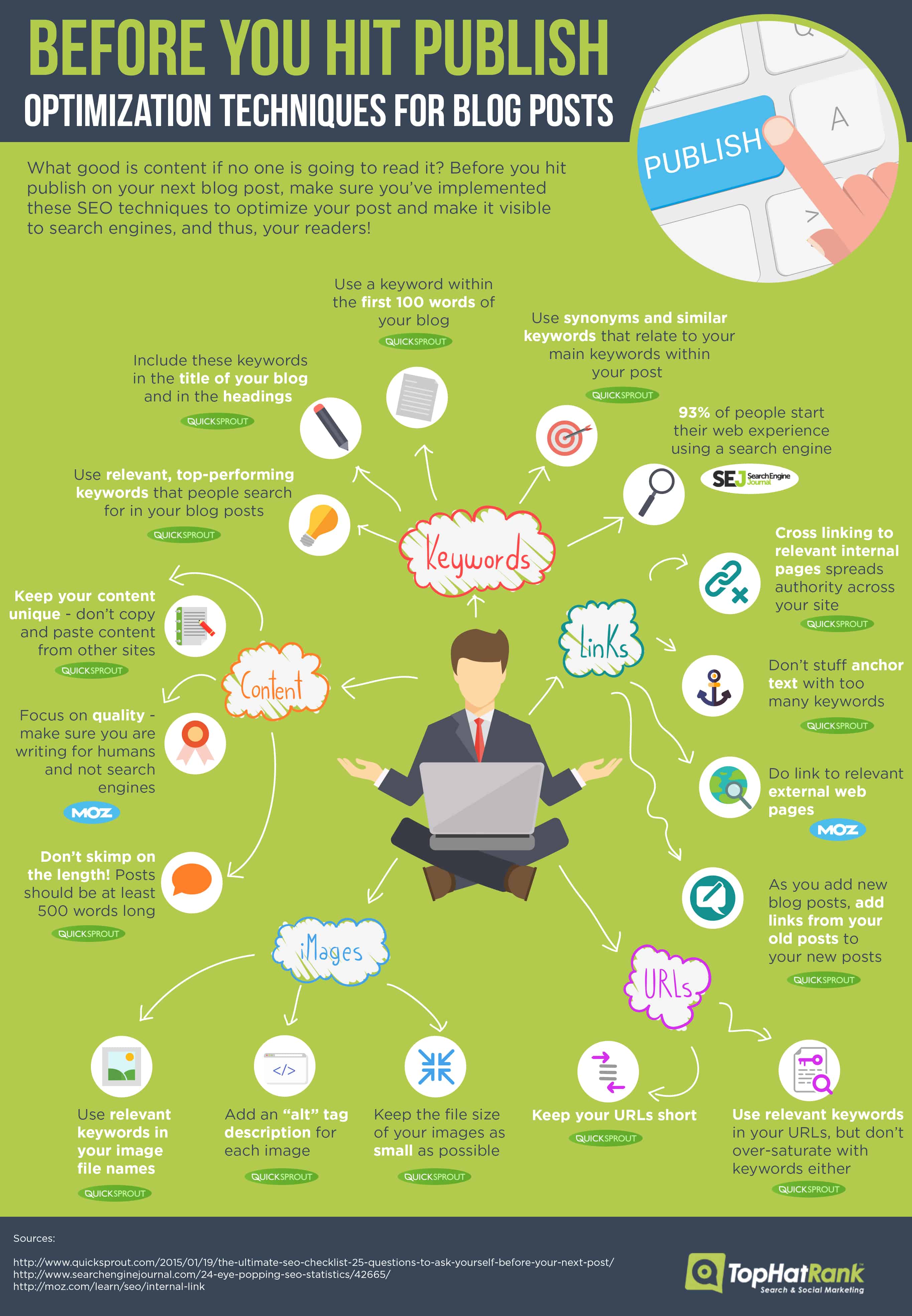Optimize Blog Posts: Boost Search Rankings and Drive Traffic

In the vast digital landscape, your blog is a beacon vying for attention amidst a sea of content. But how do you ensure your beacon shines the brightest? The answer lies in optimizing your blog posts for higher search rankings. Imagine SEO as the fuel that propels your blog to the top of search engine results pages (SERPs), where visibility is paramount. Let's dive into the world of blog SEO strategies and uncover the secrets to boosting your blog's visibility and driving organic traffic.
Understanding the Importance of Blog Optimization
Before we delve into the how, let's understand the why. Blog optimization is not just about pleasing search engines; it's about creating a seamless and enjoyable user experience. When you optimize your blog posts, you're making it easier for both search engines and users to understand, navigate, and benefit from your content. The result? Higher SERP rankings, increased organic traffic, and a satisfied audience.
How to Optimize Blog Posts for Higher Search Rankings
Conduct Thorough Keyword Research
The foundation of any successful blog SEO strategy is keyword research. Think of keywords as the roadmaps that guide users to your blog. Tools like Google Keyword Planner, SEMrush, and Ahrefs can help you identify relevant, high-volume, low-difficulty keywords. Remember, the goal is not just to rank, but to rank for the right terms.
Craft Compelling Titles and Meta Descriptions
Your title tag and meta description are the first impressions a user has of your blog post. Make them count! Ensure your primary keyword is included in both. A compelling title should be concise, accurate, and engaging. A well-crafted meta description should provide a clear overview of what the post is about and entice users to click through.
Optimize Your Headings and Subheadings
Headings (H1, H2, H3 tags) are not just for aesthetics; they help search engines understand the structure and context of your content. Your H1 tag should include your primary keyword and clearly convey the main topic of your post. Subheadings (H2, H3 tags) should break down your content into digestible sections, each optimized with relevant keywords.
Create High-Quality, Engaging Content

Content is king, and quality content is the lifeblood of your blog. But what does quality content mean? It means content that is:
- Valuable: Provides insights, answers questions, or solves problems.
- Engaging: Captures and holds the reader's attention.
- Unique: Offers a fresh perspective or new information.
- SEO-Friendly: Incorporates your target keywords naturally and strategically.
Master On-Page SEO
On-page SEO is about optimizing individual webpages for specific keywords. Here are some key on-page SEO elements to focus on:
- URL Structure: Keep it short, descriptive, and include your primary keyword.
- Internal Linking: Link to other relevant posts on your blog to keep users engaged and help search engines understand your site structure.
- External Linking: Link to authoritative external sources to provide additional value to your readers and boost your blog's credibility.
- Image Optimization: Use descriptive file names and alt tags for your images to help them rank in image search.
Improve Blog Visibility with Technical SEO
Technical SEO ensures that your blog is crawlable, mobile-friendly, and fast. Here are some technical SEO aspects to consider:
- Site Speed: Slow-loading blogs have higher bounce rates and lower rankings. Use tools like Google PageSpeed Insights to monitor and improve your site speed.
- Mobile-Friendliness: With mobile-first indexing, having a mobile-friendly blog is no longer an option; it's a necessity.
- XML Sitemap: An XML sitemap helps search engines discover and index your blog posts more efficiently.
Build Quality Backlinks
Backlinks are like votes of confidence from other websites. The more quality backlinks you have, the higher your blog will rank. Focus on building backlinks from relevant, authoritative sites in your niche. Guest blogging, resource page link building, and broken link building are effective strategies to earn quality backlinks.
Advanced Blog Optimization Techniques
Leverage Latent Semantic Indexing (LSI) Keywords
LSI keywords are terms that are semantically related to your primary keyword. Incorporating LSI keywords into your blog posts helps search engines understand your content better and improves your chances of ranking for a broader range of search terms.
Optimize for Featured Snippets
Featured snippets are the quick answers that appear at the top of SERPs. Optimizing your blog posts for featured snippets can significantly increase your visibility and click-through rates. Use structured data, answer common questions, and format your content for easy scanning.
Update and Repurpose Old Content
Don't let your old blog posts gather dust. Update them with fresh information, optimize them for new keywords, and repurpose them into different formats like infographics, videos, or podcasts. This not only breathes new life into your old content but also helps you reach a wider audience.
Conclusion: Your Journey to Higher SERP Rankings
Optimizing your blog posts for higher search rankings is a journey, not a destination. It requires a combination of art (creating engaging content) and science (implementing effective blog SEO strategies). But with the right tools, techniques, and mindset, you can boost your blog's visibility, drive organic traffic, and engage your audience like never before.
So, are you ready to shine a spotlight on your blog and climb the SERP ladder? The world of SEO awaits, and the view from the top is spectacular.
FAQs
What is the ideal keyword density for a blog post? There's no one-size-fits-all answer, but a general guideline is to aim for a keyword density of 1-2%. Remember, keyword stuffing can harm your rankings, so always prioritize natural, valuable content.
How long should a blog post be for SEO? Long-form content tends to perform better in search engines. Aim for at least 1,000 words, but remember, quality trumps quantity. Your content should be as long as it needs to be to provide value.
How often should I publish blog posts? Consistency is key. Aim to publish at least one blog post per week. Regular publishing helps keep your audience engaged and gives search engines more content to index.
Should I optimize my blog for voice search? Absolutely. Voice search is on the rise, and optimizing your blog for voice search can help you stay ahead of the curve. Focus on long-tail keywords, answer common questions, and use conversational language.
How can I track my blog's search rankings? Tools like Google Search Console, SEMrush, and Ahrefs can help you track your blog's search rankings. They provide valuable insights into your blog's performance, including which keywords you're ranking for and where you stand in SERPs.

Now that you're armed with these blog optimization techniques, it's time to put them into action. Happy optimizing, and here's to your blog's meteoric rise in search rankings!
Belum ada Komentar untuk "Optimize Blog Posts: Boost Search Rankings and Drive Traffic"
Posting Komentar